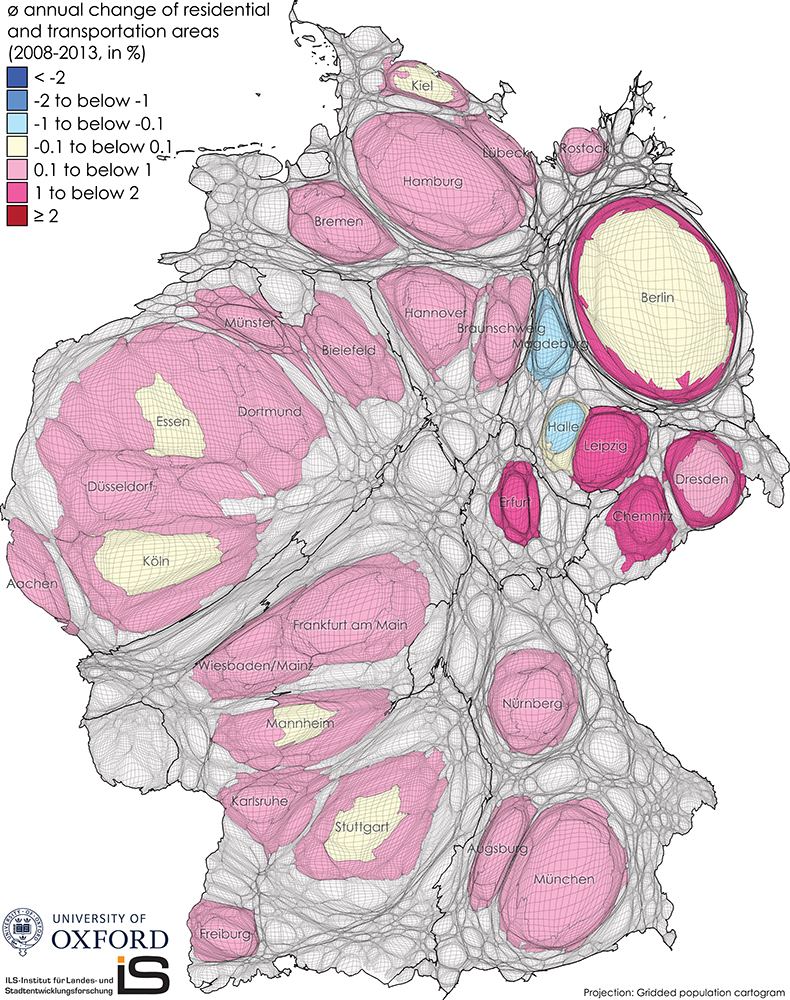Innovative maps that illustrate the most recent socio-demographic urban changes in the major city urban agglomerations in Germany have very recently been produced in a joint project of the School of Geography and the Environment at the University of Oxford and the Research Institute for Regional and Urban Development Dortmund (Germany).
The Research Institute for Regional and Urban Development (Institut für Landes und Stadtentwicklungsforschung, ILS) investigates new social processes, especially those involving urbanisation in Germany and Europe. This includes economic, social and structural processes that are compared and monitored over time to gain a better understanding of the underlying developments. Testing state-of-the-art visualisation techniques are a significant part of this effort. This was the focus of a collaboration between researchers of the University of Oxford and the ILS Dortmund which resulted in the development of a series of highly effective maps called “cartograms” that provide new insights in the changing geographies of city regions in Germany.
Examination of the average annual change in the populations of the selected urban agglomerations highlights the regional differences in these trends. Contrary to the national population decline, which is predicted to continue, 26 out of the 30 major agglomerations show population growth between 2008 and 2013. In 25 of these areas population growth in the city centre is even higher than in its suburban area. This can be seen as evidence of a very recent trend of re-urbanisation in these places.
One particularly notable trend is the dynamics in smaller cities such as Freiburg and Münster, as well as Dresden and Leipzig in east Germany. In addition to high rates of re-urbanisation, the suburban areas often have stagnating or even declining populations.
The Ruhr area agglomerations are distinctively different from the other areas described in the overall summary of trends. The stagnating populations in the centres of Dortmund and Essen are complemented by considerably declining populations in their surrounding areas.
Two cartograms depicting growth and decline have been produced as separate maps. These reveal, population decline in the settlements in the Ruhr area that is larger than in all other urban agglomerations put together. Growth, in contrast, is spatially spread much more evenly.
Amongst the influencing factors or growth and decline are developments in social structures, employment as well as changes in land development in these regions. How these factors are interconnected and influence each other is part of further research within this project that aims at establishing a long-term geomonitoring of these regions in order to better understand these new forms of urbanisation in Germany that are currently only just beginning to emerge.
Average annual change of employees
between 2008 and 2013
Average annual change of benefit recipients
between 2008 and 2013
between 2008 and 2013
Source: Views of the World







Δεν υπάρχουν σχόλια:
Δημοσίευση σχολίου